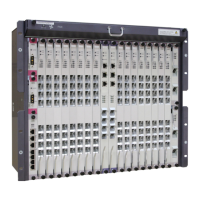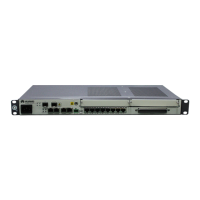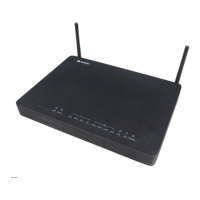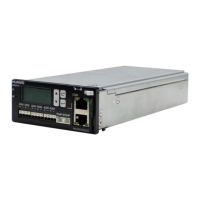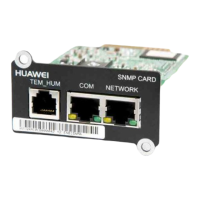Typical
Configu
ration
Static
Power
Consumpti
on
Maximum
Power
Consumptio
n
Typical
Power
Consumptio
n
Board Configuration
GPON
(H806GP
BH)
118.5 185.5 152 H801MCUD*2+H801MPW
C+H831FCBB
+H806GPBH*2
GPON
(H805GP
FD)
106.5 193.5 150 H801MCUD*2+H801MPW
C+H831FCBB
+H805GPFD*2
NOTE
The power consumption of the subrack is tested in the following conditions:
l Working voltage: -53.5 V DC.
l Ambient temperature: 25 °C.
l Static power consumption: All ports do not carry any loads. Specifically, users under POTS ports
hang up phones, xDSL ports are deactivated, and optical modules are not installed on optical ports
l Maximum power consumption: All ports fully carry loads. However, only 25% users under POTS
ports concurrently pick up phones and the feeding current is 20 mA.
l Typical power consumption: half of the total value of static power consumption and maximum
power consumption.
l The preceding table lists power consumption under typical configuration. For power consumption
under other configurations, use Access Network Hardware Configuration Tool.
l In the case of Access device, power consumption is generally transformed into heat consumption.
Hence, heat consumption (BTU/h) and power consumption (W) can be converted to each other in
the formula: 1 BTU/h = 0.2931 W.
2.6.3 Configuration
This topic provides the configuration of the boards in the MA5608T chassis, and lists the type
of the boards.
H801MABR is the backplane supported by the MA5608T. When the MA5608T is configured
in a cabinet, the lower cable manager must be configured.
Figure 2-29 Configuration of boards in the MA5608T chassis (with H801MPWC or
H801MPWD power board)
FAN
0
1
2
GPIO
Service board
Control board Power board3 4
Service board
Control board
SmartAX MA5600T/MA5603T/MA5608T Multi-service
Access Module
Hardware Description
2 Subrack and Chassis
Issue 24 (2018-07-30) Huawei Proprietary and Confidential
Copyright © Huawei Technologies Co., Ltd.
134

